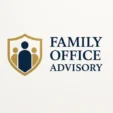Tax Governance & Cross-Border Coordination #
Tax governance provides the framework through which a family office ensures compliance, transparency, and strategic tax efficiency across all entities, jurisdictions, and generations. With families often living, investing, and operating internationally, cross-border coordination becomes essential to manage reporting obligations, residency status, inheritance rules, and corporate tax implications.
Context & Importance #
UHNW families typically hold diversified portfolios with global exposures—operating companies, real estate structures, private equity funds, and trusts in multiple regions. Without a unified tax strategy, these structures risk double taxation, reporting failures, regulatory breaches, and inefficient wealth transfers. A disciplined tax governance model supports asset protection, family continuity, and compliance with global transparency regimes such as CRS and FATCA.
Core Components of Tax Governance #
- Tax strategy & policy: Family-approved guidelines for tax efficiency, risk tolerance, and jurisdictional alignment.
- Residential & domicile planning: Coordinating personal residency, citizenship, and tax domicile rules.
- Entity structuring: Optimizing holding companies, trusts, and operating entities for tax efficiency.
- Transparency compliance: FATCA, CRS, local reporting, and economic substance requirements.
- Cross-border inheritance planning: Managing forced heirship rules, treaty application, and tax-efficient transfers.
- Indirect tax considerations: VAT, property taxes, real estate transfer taxes, and import duties.
- Documentation & audit readiness: Maintaining consistent records, valuation support, and governance documentation.
Cross-Border Coordination #
Cross-border arrangements present complex interactions between tax laws, reporting regimes, and inheritance rules. A family office coordinates among legal, tax, and compliance professionals to harmonize structures and prevent unintended exposures.
- Residency management: Tracking travel days, residency thresholds, and dual-residency risk.
- Treaty analysis: Applying double taxation treaties for dividends, interest, capital gains, and inheritance.
- Trust and foundation implications: Jurisdiction-specific taxation of distributions and control tests.
- Corporate structuring: Ensuring economic substance and avoiding harmful tax practices.
- Withholding tax mapping: Documenting cross-border payments and reclaim opportunities.
- Global mobility: Tax planning for relocating family members or key executives.
Implementation & Best Practices #
- Define a tax governance framework: Include roles, responsibilities, escalation rules, and decision workflows.
- Centralize documentation: Maintain entity charts, trust deeds, valuation reports, and compliance logs in secure systems.
- Conduct annual structure reviews: Update for life events, relocations, regulatory changes, and tax reforms.
- Use independent tax opinions: Validate complex cross-border structures through external experts.
- Integrate tax planning with IPS: Align investment decisions with tax considerations (e.g., harvesting, asset location).
- Maintain audit readiness: Ensure clean documentation with clear rationale for structures and transac




